Ireland
My first impression of Ireland is that they are good at ruins. The little seaside village of Ardmore where we are staying has got a ruined Cathedral…
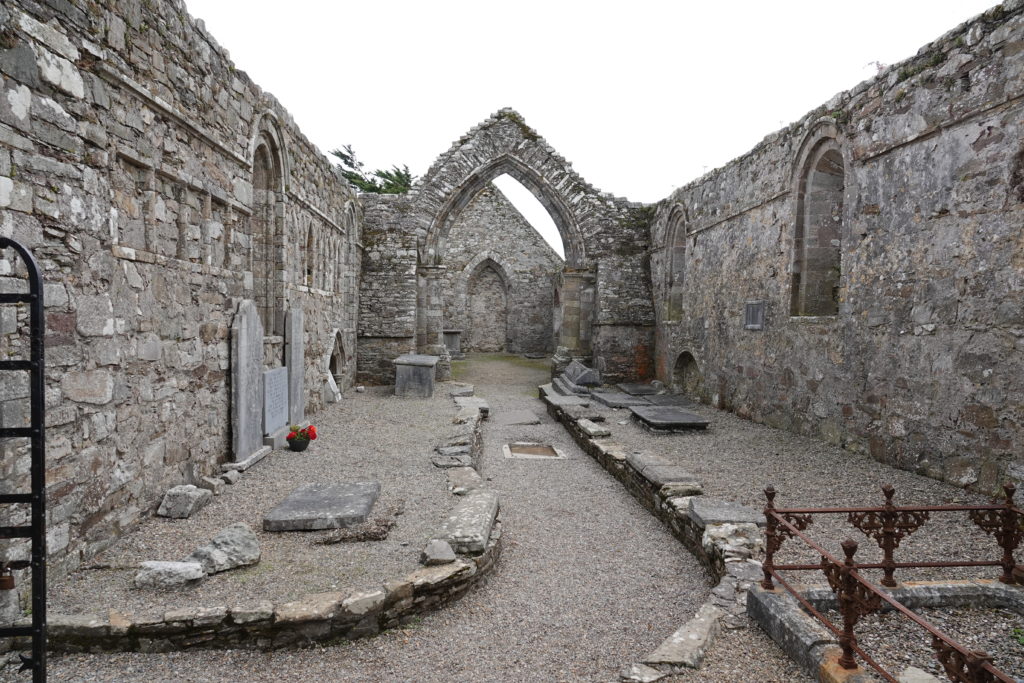
… several ruined watchtowers…


… a shipwreck…

… a ruined hermitage…

… a ruined shed oratory, heavily restored in the 18th century…

…and two ruined wells…

Yep, that’s Paula taking a nose dive into St. Declan’s Well, to see if the water really does cure scurvy. Of course, it’s not going to have any effect, since she didn’t walk three times round the ruined church widdershins on 24th July with a rosary stuck up her a***.
St. Declan is a big hero in this part of the world, since he got here and made the locals into good Catholics before St. Patrick arrived in Ireland. Sadly the poor lad never invented green beer, so St Paddy got all the publicity. Down by the pier is St Declan’s Stone, precariously balanced on some other rocks.
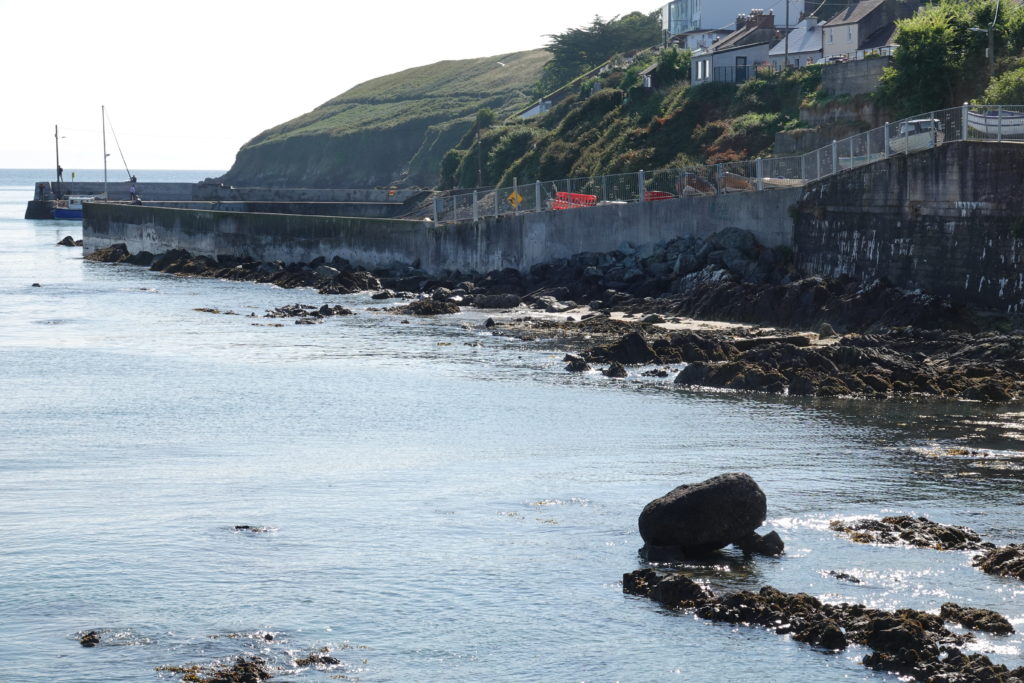
St. Declan was a careless packer, and when he was returning from a trip to Wales he forgot his favorite bell, which had been given to him personally by god. You can just imagine the scene.
GOD: I am the lord god almighty come to vouchsafe you a gift.
ST DECLAN: Praise the lord! What is it? World peace? A cure for the plague? X-ray vision?
GOD: Actually, I thought you might like this bell.
ST DECLAN: Does it confound the heathens or cure snakebite?
GOD: No, it goes Ring! Ring! Ring!
ST DECLAN: Praise the Lord Ring! Ring! Ring! [aside] what a cheap bugger!
Anyhow, like I said, St. Declan was on his way back from Wales, and realized he had forgotten his holy bell. Rather than asking someone to fetch it, he prayed for its safety. The bell promptly leapt upon this rock and floated across the Irish sea to land on the beach at Ardmore. The local superstition says that if you crawl under the rock three times (on July 24th with a rosary up your etc. etc.) you will be cured of arthritis. That’s a bit like saying that if you climb up the outside of the round tower…
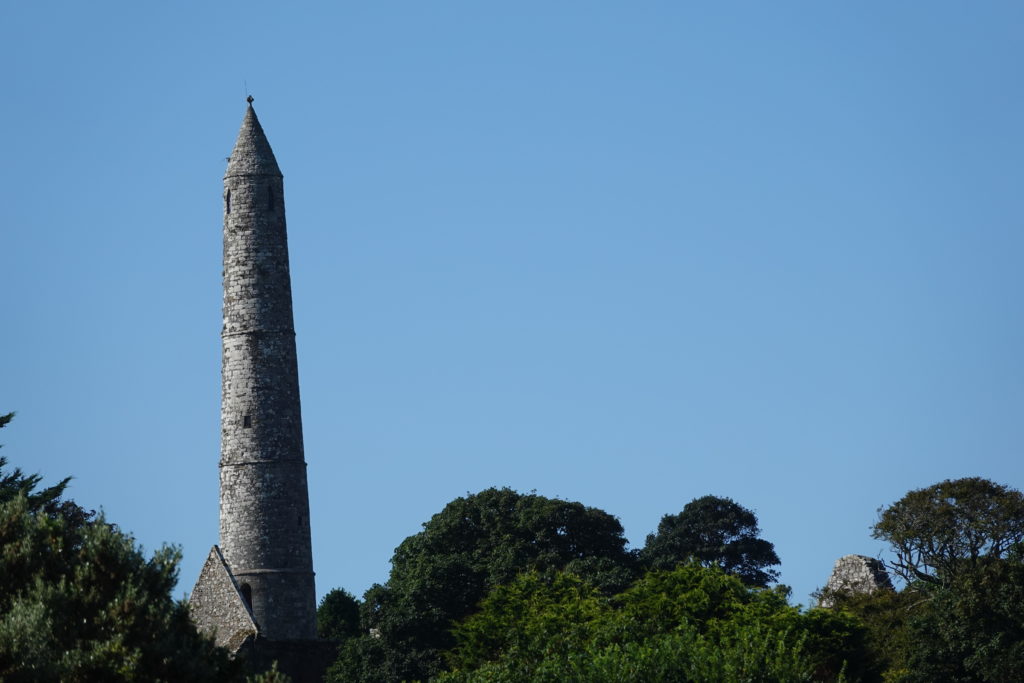
… and dance an Irish Jig on top you will be cured of one-leggedness. It may be true, but it’s not likely to be put to the test. Science says that if you crawl under the rock three times at the wrong time of year you will die of drowning. In this case I think science is more trustworthy.
Now, it is true that the magic stone is not of the local rock, so either it floated across the Irish Sea because god thought it was really important to deliver a bell to a forgetful saint, or someone put it on a boat as ballast. We report, you decide. Though, if you decide on the forgetful saint theory, then god has some pretty f***ed-up priorities.
Ruins aside, Ardmore seems to be a lovely village. A footpath through a strange little linear park…

We took the cliff walk past a beautifully manicured garden clinging to the cliff top…
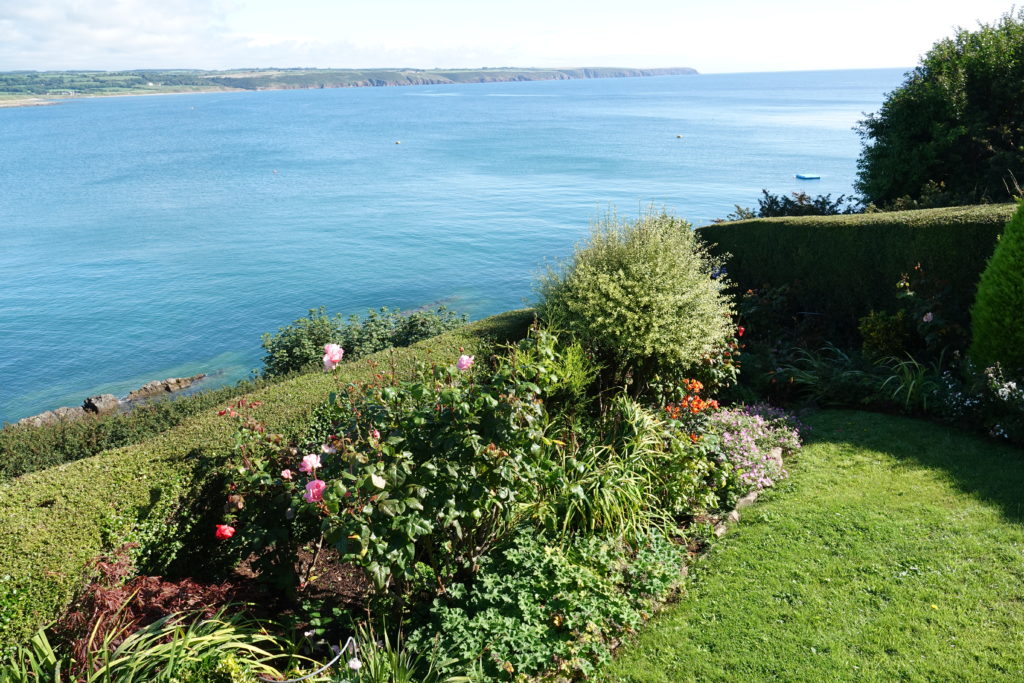
… and some beautiful coastal scenery.

There are birds (that’s a kestrel)…

… and the town is littered with random boat parts.
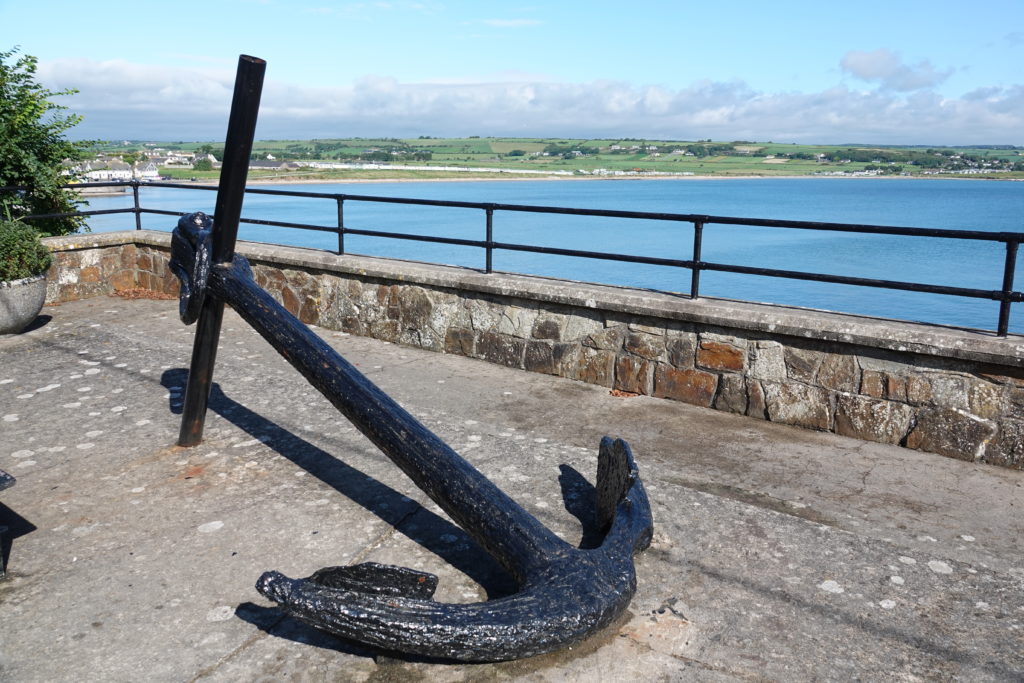
The cathedral has two stones with inscriptions in Ogham, the barcode script from the dark ages that makes Linear-B look like cursive.

This one says “…of Luguid son of .. the tribe of Nad-Segamon”, unlike the one in Terry Pratchett’s Lords and Ladies.
There was a runic inscription underneath.
“Anyone ever worked out what that says?” said Casanunda.
Nanny Ogg nodded.
“It’s a variant of Oggham,” she said. “Basically, it means ‘I’ve Got a Great Big Tonker.'”
“Oggham?” said the dwarf.
“My family has been in these, how shall I put it, in these parts for a very long time,” said Nanny.
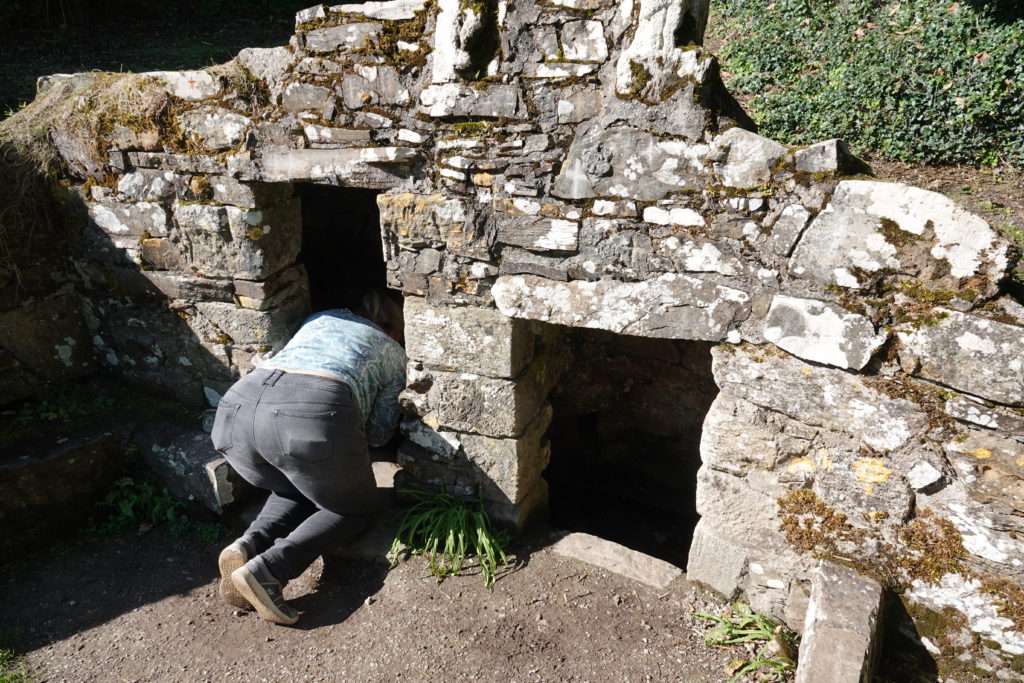
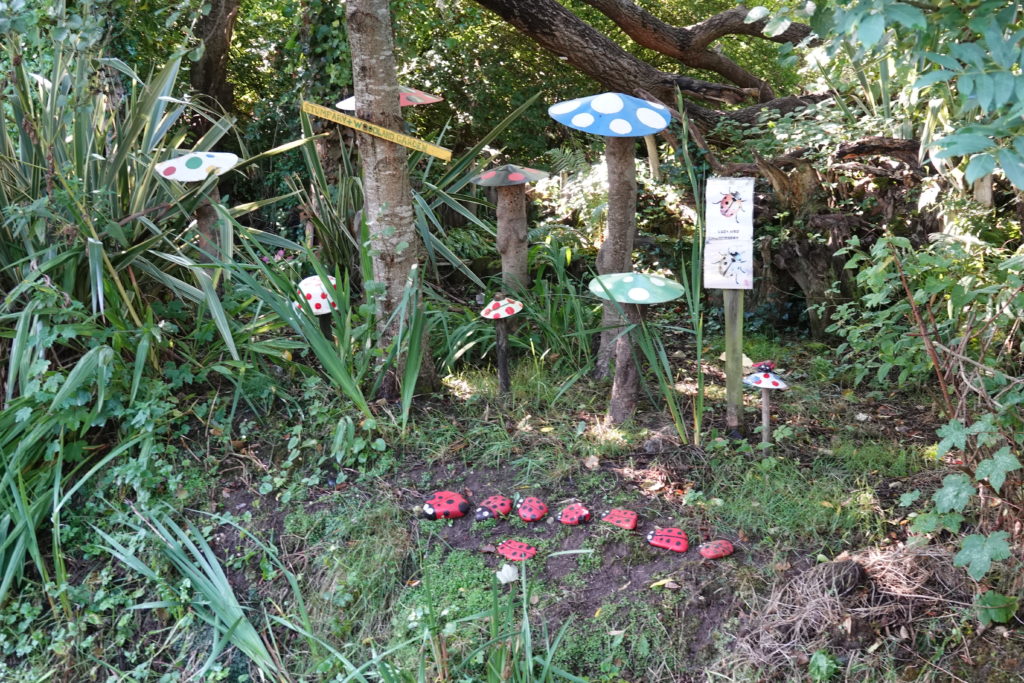





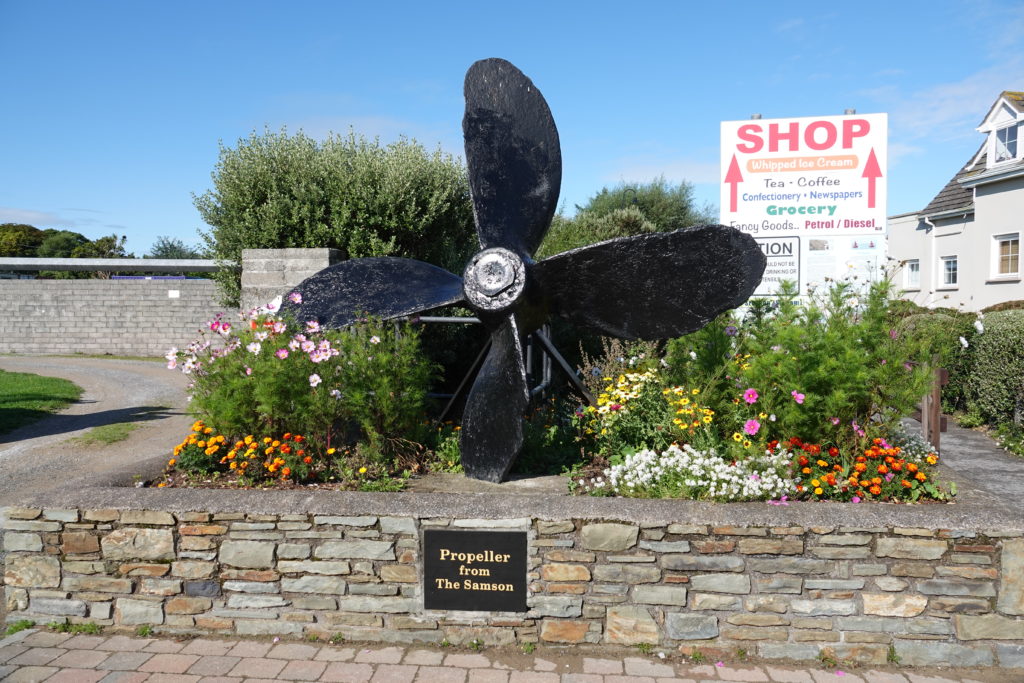
5 thoughts on “Ireland”
Seeing the photos makes me wish I was there. Very sorry we couldn’t make it this time. But you are forging the path for us, so next time, all the kinks will be worked out, right? Looks lovely, sounds relaxing. Look forward to more….
😉
One of the nuns who taught me until I was 11 was sister Declan . Very pretty ,but quite vicious with a 12” ruler !!!
The Irish were not nearly as talented at ruin making as the English;)
There seem to be a lot more ruins per square mile in Ireland. I think it’s because the look at a ruin, and see it as something to be nurtured like a grudge, whereas the English look at a ruin and see it as a handy source of building materials for something useful.